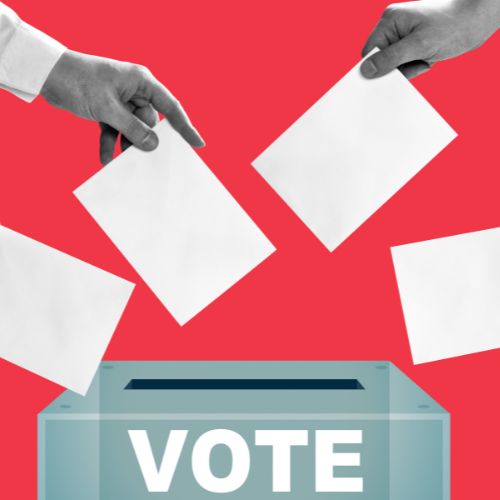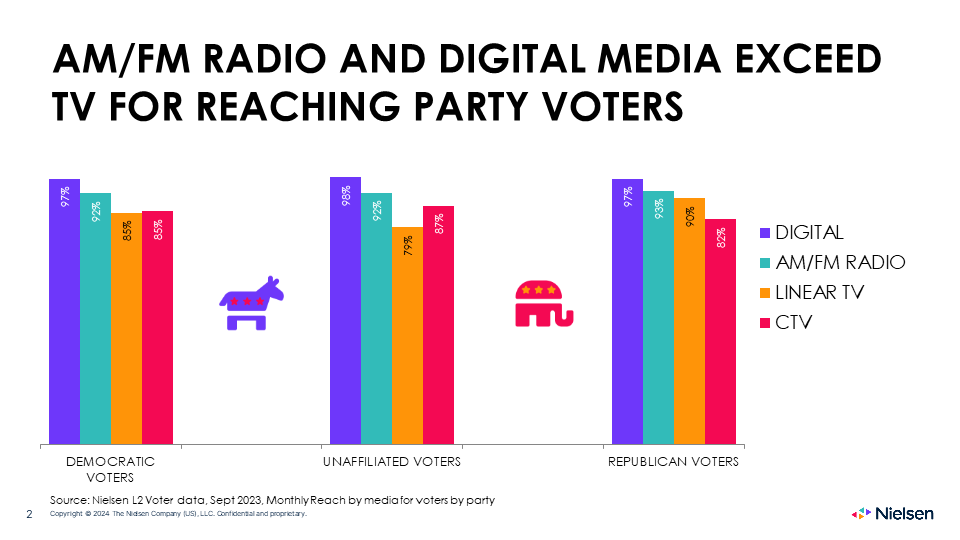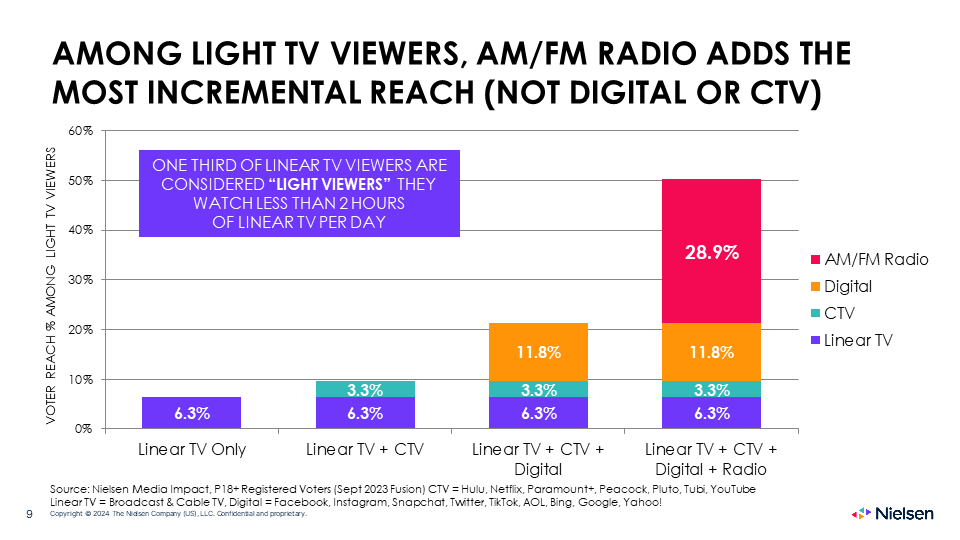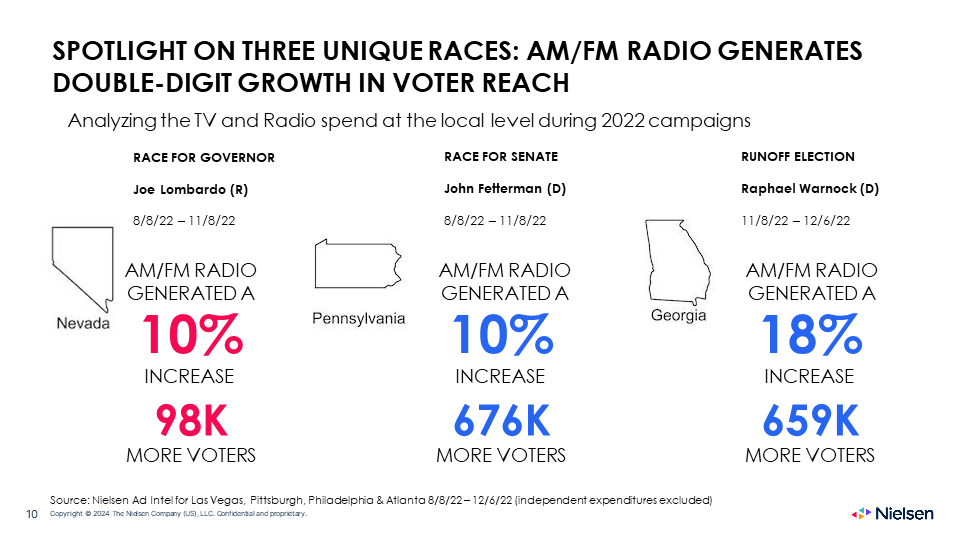
In findings that could reshape how the modern political campaign is run, a new Nielsen study shows the substantial impact of radio on elections. The study, in partnership with Cumulus Media, iHeartMedia, and Audacy, reveals that early deployment of AM/FM ads significantly enhances reach, particularly among undecided voters.
The study found that AM/FM outperforms both television and connected TV in reaching voters across all segments, notably among independent and unaffiliated voters. This challenges the conventional use of radio for targeting narrow segments or last-minute “get out the vote” efforts, suggesting its effectiveness as a broad-scale media strategy akin to TV.

Allocating 20% of the political campaign media budget to traditional radio not only recovers lost voter reach from previous campaigns but also significantly boosts overall voter engagement. This is especially true for key demographics such as undecided voters, light TV viewers, Gen Xers, and Millennials.

Nielsen highlighted successful political campaigns, including high-profile races with Senator John Fetterman and Senator Raphael Warnock, that leveraged AM/FM early and frequently, achieving remarkable gains in voter reach. These campaigns saw double-digit growth in incremental reach, winning narrow-margin races by engaging voters not reached by TV or CTV.

Analysis revealed that repeating the same TV, digital, and CTV advertising mix from the previous year results in a 12% drop in voter reach.
Contrary to the belief that CTV and digital platforms can compensate for TV’s diminishing reach, the study showed that these platforms only provide modest increases in voter reach. Even more important is how increasing the proportion of CTV/digital in media plans actually lowers voter reach.
By integrating AM/FM radio into their strategies, campaigns can significantly enhance their reach and impact, especially in today’s fragmented media landscape.





